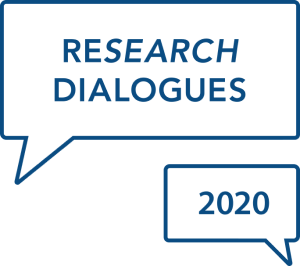
Day 2, April 15 - Presentations
Start Date
15-4-2020 1:00 PM
End Date
15-4-2020 3:00 PM
Publisher
University of Tennessee at Chattanooga
Place of Publication
Chattanooga (Tenn.)
Abstract
Context: Following sport‐related concussion (SRC), risk for musculoskeletal injury may be approximately 2 times greater, and risk for another SRC may be 3 to 5 times greater. Preparticipation screening methods are needed that can accurately identify athletes who possess elevated injury risk.
Methods: Occurrences of SRC and core or lower extremity injury (CLEI) were documented throughout a high school football season for a cohort of 92 players who performed a pre‐participation perceptual‐motor test and provided survey responses. A smartphone flanker test app presented displays of incongruent (<<><< or >><>>) or congruent (<<<<< or >>>>>) arrows arrows that required determination of a right versus left manual tilt of the device to register a response. Reaction time and response accuracy measures were used to derive conflict effect (CE), inverse efficiency index (IEI), and inverse efficiency ratio (IER) metrics. Any post‐concussion symptoms (Sx) were quantified by the Overall Wellness Index (OWI) and any persisting effects of previous musculoskeletal injuries were quantified by the Sport Fitness Index (SFI).
Results: History of SRC (HxSRC) was reported by 15% of the players. Factors that provided strongest discrimination of HxSRC cases from players who denied such history (NoSRC) were OWI Sx ≥4 and CE ≥52, and, with OR=13.9 for both versus 0 or 1 positive. Prospective predictors of CLEI among players with HxSRC included SFI score ≤92 (OR=33.8), IER ≥2.0 (OR=17), and OWI Sx ≥3 (OR=15). Prospective predictors of SRC for the full cohort included OWI Sx ≥7 (OR=36.4), SFI score ≤78 (OR=16.8), OWI score ≤76 (OR=12.8), HxSRC (OR=10), and IER ≥1.7 (OR=3.8).
Conclusion: Our results suggest the combination of OWI and SFI survey responses with perceptual‐motor performance metrics derived from the smartphone flanker test provides an effective means for pre‐participation identification of high school football players who possess elevated risk for subsequent SRC or CLEI occurrence.
Date
4-15-2020
Document Type
presentations
Language
English
Rights
http://rightsstatements.org/vocab/InC/1.0/
License
http://creativecommons.org/licenses/by/4.0/
Recommended Citation
Wilkerson, Gary B., "Smartphone Application to Quantify Sport‐Related Injury Risk of Individual Athletes". ReSEARCH Dialogues Conference proceedings. https://scholar.utc.edu/research-dialogues/2020/day2_presentations/60.
Smartphone Application to Quantify Sport‐Related Injury Risk of Individual Athletes
Context: Following sport‐related concussion (SRC), risk for musculoskeletal injury may be approximately 2 times greater, and risk for another SRC may be 3 to 5 times greater. Preparticipation screening methods are needed that can accurately identify athletes who possess elevated injury risk.
Methods: Occurrences of SRC and core or lower extremity injury (CLEI) were documented throughout a high school football season for a cohort of 92 players who performed a pre‐participation perceptual‐motor test and provided survey responses. A smartphone flanker test app presented displays of incongruent (<<><< or >><>>) or congruent (<<<<< or >>>>>) arrows arrows that required determination of a right versus left manual tilt of the device to register a response. Reaction time and response accuracy measures were used to derive conflict effect (CE), inverse efficiency index (IEI), and inverse efficiency ratio (IER) metrics. Any post‐concussion symptoms (Sx) were quantified by the Overall Wellness Index (OWI) and any persisting effects of previous musculoskeletal injuries were quantified by the Sport Fitness Index (SFI).
Results: History of SRC (HxSRC) was reported by 15% of the players. Factors that provided strongest discrimination of HxSRC cases from players who denied such history (NoSRC) were OWI Sx ≥4 and CE ≥52, and, with OR=13.9 for both versus 0 or 1 positive. Prospective predictors of CLEI among players with HxSRC included SFI score ≤92 (OR=33.8), IER ≥2.0 (OR=17), and OWI Sx ≥3 (OR=15). Prospective predictors of SRC for the full cohort included OWI Sx ≥7 (OR=36.4), SFI score ≤78 (OR=16.8), OWI score ≤76 (OR=12.8), HxSRC (OR=10), and IER ≥1.7 (OR=3.8).
Conclusion: Our results suggest the combination of OWI and SFI survey responses with perceptual‐motor performance metrics derived from the smartphone flanker test provides an effective means for pre‐participation identification of high school football players who possess elevated risk for subsequent SRC or CLEI occurrence.

